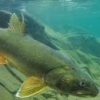Hello all! I am (still) in the planning phase of my sunfish tank, and a question came up. Given this is a native tank, and given I live in the US and can get the plants/substrate/whatever I need fairly easily, I want to make this tank as natural as possible. My tropical tanks are all Walstad method, heavily planted breeding tanks (with the exception of the bettas) and it occurred to me I'd really like to take things one step further.
This involves in my opinion the introduction of a Deep Sand Bed to my tank. If I do this, I plan a thin base layer of soil topped with the sand bed. The sand bed is meant to act as the main biofilter in the tank, and work for denitrification as well. I want a thick, stable anaerobic bed beneath the top layer.
Has anyone here ever done this? It's meant to replicate the natural environment of a slow moving stream or possibly a swamp. That is, in it's application in freshwater. If anyone can offer advice on setting one up appropriately I'd very much appreciate it. I plan to plant the tank with rooted plants, stock it with ghost shrimp, scuds, and blackworms *before* adding fish, so that should take care of aeration in the top layer of the soil.
I've been chatting with a friend who works in a water treatment plant. I know very little about water treatment for human consumption, which is what it seems he does for a living, but apparently there is a huge "pond" before the water reaches the mechanical plant, in which the suspended dirt is meant to collect at the bottom. He informs me that this is where collection of bacterial samples occurs, and when working in the pond, the anaerobic zone occurs at 4" deep or more. This is based on the presence of the black "muck" that becomes crude oil, the scent, and the depth at which his boots get stuck in the muck. Does this sound right? 4-6" of sand? Would that be deep enough to keep the blackworms out of the intended anaerobic zone?
And probably the most important question: What are the warning signs of a problem? I realize I shouldn't be able to smell the anaerobic bacteria in a tank set up like this. If I can, immediate removal of the fish and inverts will be my first step. Are there other signs that there is a problem? How do I know if I've managed to culture the right sort of denitrifying bacteria in the anaerobic zones? The last thing I want is something that can harm the fish, and I know many anaerobes carry that risk (mycobacterium immediately comes to mind)
Any help on this would be much appreciated. ![]()











